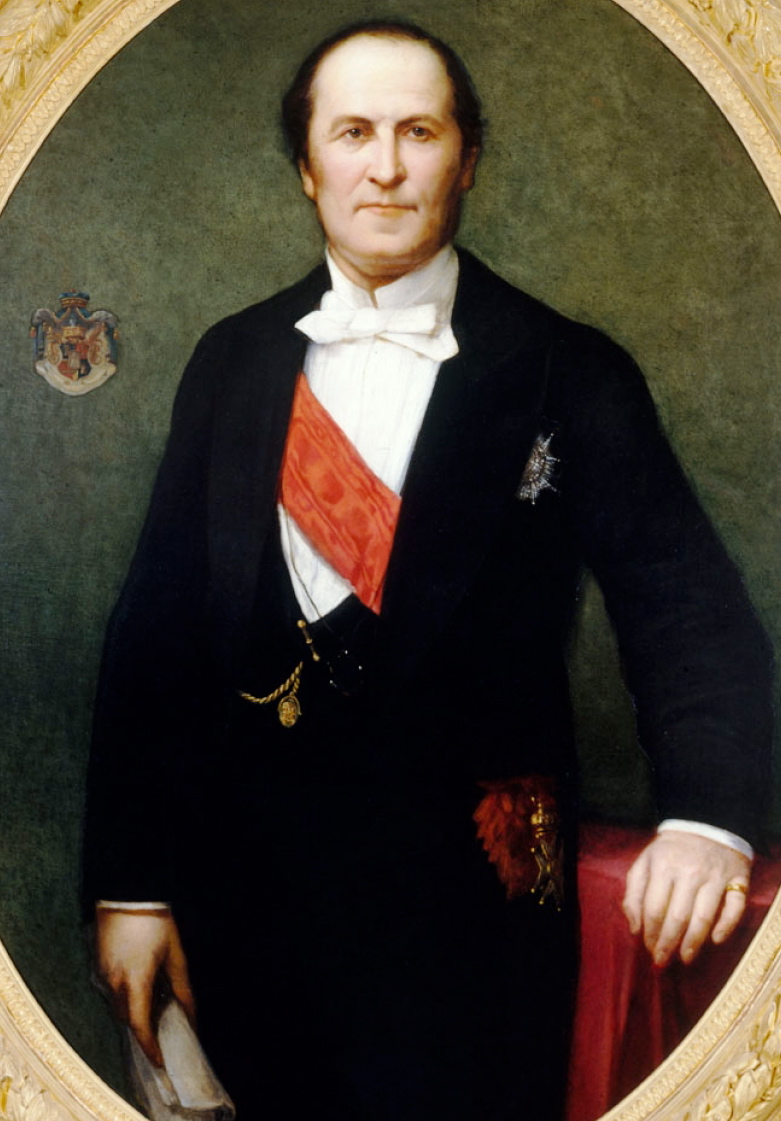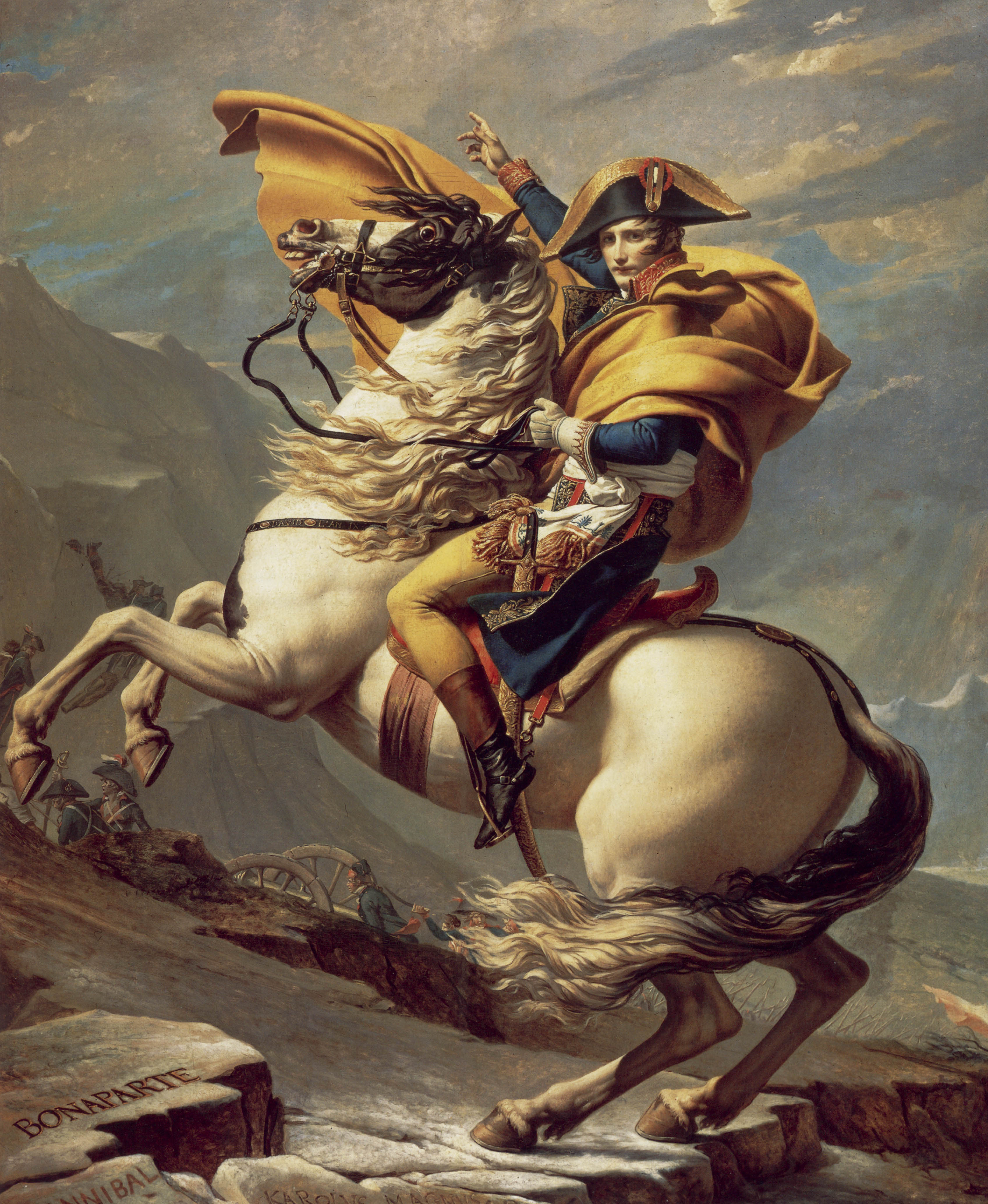|
Fontaine Du Palmier
The Fontaine du Palmier (1806-1808) or Fontaine de la Victoire is a monumental fountain located in the Place du Châtelet, between the Théâtre du Châtelet and the Théâtre de la Ville, in the First Arrondissement of Paris. It was designed to provide fresh drinking water to the population of the neighborhood and to commemorate the victories of Napoleon Bonaparte. It is the largest fountain built during Napoleon's reign still in existence. The closest métro station is Châtelet Design The Fountain du Palmier was one of a series of fifteen fountains commissioned by Napoleon in 1806 to his minister of the Interior, Emmanuel Cretet. It was designed by the engineer François-Jean Bralle, who was in charge of the Paris fountains and water supply during the First Empire. It was finished in 1808. The column, modeled after a Roman triumphal column, takes its name from the sculpted palm leaves at the top, commemorating Napoleon's Egyptian Campaign. The bands of bronze on ... [...More Info...] [...Related Items...] OR: [Wikipedia] [Google] [Baidu] |
François-Jean Bralle
François-Jean Bralle (11 January 1750 – 12 June 1832) was a French architect and engineer, best known as for the construction of fountains in Paris during the time of Napoleon Bonaparte. Bralle was commissioned to build fifteen new fountains in Paris, including the fontaine de Mars, the fontaine du Fellah, and the Fontaine du Palmier in the Place du Châtelet, which are still functioning today. Bralle and the fountains of the Decree of Saint Cloud Bralle was a specialist in hydraulic engineering. During the French Revolution and under the French Consulate of Napoleon, he was named director of the machine de Marly, which pumped water from Seine to feed to fountains of the Gardens of Versailles. He was also in charge of the pumps of Chaillot, of Gros-Caillou, and La Samaritaine, which pumped water from the Seine to provide drinking water to the people of Paris. On May 2, 1806, Napoleon issued the Decree of Saint Cloud, which began, "Beginning next July 1, water will flow from ... [...More Info...] [...Related Items...] OR: [Wikipedia] [Google] [Baidu] |
Place Du Châtelet En 1807
Place may refer to: Geography * Place (United States Census Bureau), defined as any concentration of population ** Census-designated place, a populated area lacking its own municipal government * "Place", a type of street or road name ** Often implies a dead end (street) or cul-de-sac * Place, based on the Cornish word "plas" meaning mansion * Place, a populated place, an area of human settlement ** Incorporated place (see municipal corporation), a populated area with its own municipal government * Location (geography), an area with definite or indefinite boundaries or a portion of space which has a name in an area Placenames * Placé, a commune in Pays de la Loire, Paris, France * Plače, a small settlement in Slovenia * Place (Mysia), a town of ancient Mysia, Anatolia, now in Turkey * Place, New Hampshire, a location in the United States * Place House, a 16th-century mansion largely remodelled in the 19th century, in Fowey, Cornwall * Place House, a 19th-century mansion on ... [...More Info...] [...Related Items...] OR: [Wikipedia] [Google] [Baidu] |
Henri Alfred Jacquemart
Henri Alfred Marie Jacquemart () (24 February 1824, in Paris – 4 January 1896, in Paris), often known as Alfred Jacquemart, was a noted French sculptor and animalier. He usually signed his works: ''A. Jacquemart''. Jacquemart studied under painter Paul Delaroche and sculptor Jean Baptiste Jules Klagmann. He entered the École des Beaux-Arts in 1845. Jacquemart exhibited at the Paris Salon from 1847–1879, receiving medals in 1857, 1863 and 1865. He traveled in Egypt and Turkey, and was commissioned by the city of Alexandria, Egypt, to create a colossal statue of Muhammad Ali of Egypt. He sculpted in large, medium and small scale. Many of his works were cast in bronze by the Val d' Osne foundry and some by the silversmith Christofle. Ultimately, however, he earned his reputation for his many larger animal works. In 1870 Jacquemart became a Chevalier of the Légion d'honneur. Jacquemart died suddenly at his apartment in the Rue de Babylone, Paris on the night of 4 January 18 ... [...More Info...] [...Related Items...] OR: [Wikipedia] [Google] [Baidu] |
Sphinxes
A sphinx ( , grc, σφίγξ , Boeotian: , plural sphinxes or sphinges) is a mythical creature with the head of a human, the body of a lion, and the wings of a falcon. In Greek tradition, the sphinx has the head of a woman, the haunches of a lion, and the wings of a bird. She is mythicized as treacherous and merciless, and will kill and eat those who cannot answer her riddle. This deadly version of a sphinx appears in the myth and drama of Oedipus. Unlike the Greek sphinx, which was a woman, the Egyptian sphinx is typically shown as a man (an androsphinx ( grc, ανδρόσφιγξ)). In addition, the Egyptian sphinx was viewed as benevolent but having a ferocious strength similar to the malevolent Greek version. Both were thought of as guardians and often flank the entrances to temples. In European decorative art, the sphinx enjoyed a major revival during the Renaissance. Later, the sphinx image, initially very similar to the original Ancient Egyptian concept, was export ... [...More Info...] [...Related Items...] OR: [Wikipedia] [Google] [Baidu] |
Georges-Eugène Haussmann
Georges-Eugène Haussmann, commonly known as Baron Haussmann (; 27 March 180911 January 1891), was a French official who served as Prefect (France), prefect of Seine (department), Seine (1853–1870), chosen by Emperor Napoleon III to carry out a massive urban renewal programme of new boulevards, parks and public works in Paris commonly referred to as Haussmann's renovation of Paris.http://www.culture.gouv.fr/documentation/joconde/fr/decouvrir/zoom/zoom-haussmann.htm - Joconde - visites guidées - zooms - baron Haussmann 2012-03-05 Critics f ... [...More Info...] [...Related Items...] OR: [Wikipedia] [Google] [Baidu] |
Louis Napoleon
Napoleon III (Charles Louis Napoléon Bonaparte; 20 April 18089 January 1873) was the first President of France (as Louis-Napoléon Bonaparte) from 1848 to 1852 and the last monarch of France as Emperor of the French from 1852 to 1870. A nephew of Napoleon I, he was the last monarch to rule over France. Elected to the presidency of the Second Republic in 1848, he seized power by force in 1851, when he could not constitutionally be reelected; he later proclaimed himself Emperor of the French. He founded the Second Empire, reigning until the defeat of the French Army and his capture by Prussia and its allies at the Battle of Sedan in 1870. Napoleon III was a popular monarch who oversaw the modernization of the French economy and filled Paris with new boulevards and parks. He expanded the French overseas empire, made the French merchant navy the second largest in the world, and engaged in the Second Italian War of Independence as well as the disastrous Franco-Prussian War, dur ... [...More Info...] [...Related Items...] OR: [Wikipedia] [Google] [Baidu] |
Gabriel Davioud
Jean-Antoine-Gabriel Davioud (; 30 October 1824 – 6 April 1881) was a French architect. He worked closely with Baron Haussmann on the transformation of Paris under Napoleon III during the Second Empire. Davioud is remembered for his contributions to architecture (e.g. the two theaters on the place du Châtelet and the city hall of the 19th arrondissement), parks (e.g. the Pré Catelan garden and the square des Batignolles) and urban amenities (fountains, pavilions, benches and kiosks). These contributions now form an integral part of the style of Haussmann's Paris. Biography Davioud was born in Paris and studied at the École des Beaux-Arts under Léon Vaudoyer. He won the prestigious Second Grand Prix de Rome. In 1843, he began working in the planning department of the municipal government of Paris. First, he served as an assistant inspector and later was promoted to inspector general for architectural works. In 1855, he became chief architect for the city’s parks and publi ... [...More Info...] [...Related Items...] OR: [Wikipedia] [Google] [Baidu] |
Louis-Simon Boizot
Louis-Simon Boizot (1743–1809) was a French sculptor whose models for biscuit figures for Sèvres porcelain are better-known than his large-scale sculptures. Biography Boizot was the son of Antoine Boizot, a designer at the Gobelins manufacture of tapestry. At sixteen, he became a student at the Académie royale de peinture et de sculpture and worked in the atelier of the sculptor René-Michel Slodtz (1705–1764), with whom Houdon also trained. Boizot took the Prix de Rome for sculpture in 1762, for a sojourn at the French Academy in Rome (1765–70). On his return to Paris he married Marguerite Virginie Guibert, daughter of the sculptor Honoré Guibert. He was admitted to the Académie royale de peinture et de sculpture in 1778 and exhibited at the annual salons until 1800. His portrait busts of Louis XVI and Joseph II, executed during the Emperor's visit to his sister Marie Antoinette, were executed in 1777 and reproduced in biscuit porcelain at Sèvres. A subtly nuan ... [...More Info...] [...Related Items...] OR: [Wikipedia] [Google] [Baidu] |
Battle Of Lodi
The Battle of Lodi was fought on 10 May 1796 between French forces under Napoleon Bonaparte and an Austrian rear guard led by Karl Philipp Sebottendorf at Lodi, Lombardy. The rear guard was defeated, but the main body of Johann Peter Beaulieu's Austrian Army had time to retreat. Order of battle French Army French Army: General Napoleon Bonaparte (15,500 infantry, 2,000 cavalry) * Division: General of Division André Masséna * Advance Guard: General of Brigade Claude Dallemagne (3,000 elite infantry) * Cavalry: General of Brigade Marc Antoine de Beaumont and Colonel Michel Ordener Austrian Army Austrian-Neapolitan Army: Beaulieu (not present) * Division: Feldmarschall-Leutnant Karl Philipp Sebottendorf (6,577 not including Nicoletti and Naples detachments) ** Rear Guard: General-Major Josef Philipp Vukassovich *** 2 battalions ''Carlstädter'' Grenz Infantry Regiment ** Lodi Covering Force: General-Major Gerhard Rosselmini *** 1 battalion ''Nádasdy'' Infantry Regiment # 39 ... [...More Info...] [...Related Items...] OR: [Wikipedia] [Google] [Baidu] |
Battle Of The Pyramids
The Battle of the Pyramids, also known as the Battle of Embabeh, was a major engagement fought on 21 July 1798, during the French Invasion of Egypt. The battle took place near the village of Embabeh, across the Nile River from Cairo, but was named by Napoleon after the Great Pyramid of Giza visible nearly 9 miles away. After capturing Alexandria and crossing the desert, the French army, led by General Napoleon Bonaparte, scored a decisive victory against the main army of the local Mamluk rulers, wiping out almost the entire Ottoman army located in Egypt. It was the first battle where Bonaparte personally devised and employed the divisional square tactic to great effect. The deployment of the French brigades into these massive rectangular formations repeatedly threw back multiple cavalry charges of the Mamluks. The victory effectively sealed the French conquest of Egypt as Murad Bey salvaged the remnants of his army, chaotically fleeing to Upper Egypt. French casualties amo ... [...More Info...] [...Related Items...] OR: [Wikipedia] [Google] [Baidu] |
Battle Of Marengo
The Battle of Marengo was fought on 14 June 1800 between French forces under the First Consul Napoleon Bonaparte and Austrian forces near the city of Alessandria, in Piedmont, Italy. Near the end of the day, the French overcame General Michael von Melas's surprise attack, drove the Austrians out of Italy and consolidated Bonaparte's political position in Paris as First Consul of France in the wake of his coup d'état the previous November. Surprised by the Austrian advance toward Genoa in mid-April 1800, Bonaparte hastily led his army over the Alps in mid-May and reached Milan on 2 June. After cutting Melas's line of communications by crossing the River Po and defeating ''Feldmarschallleutnant'' (FML) Peter Karl Ott von Bátorkéz at Montebello on 9 June, the French closed in on the Austrian Army, which had massed in Alessandria. Deceived by a local double agent, Bonaparte dispatched large forces to the north and the south, but the Austrians launched a surprise attack o ... [...More Info...] [...Related Items...] OR: [Wikipedia] [Google] [Baidu] |



